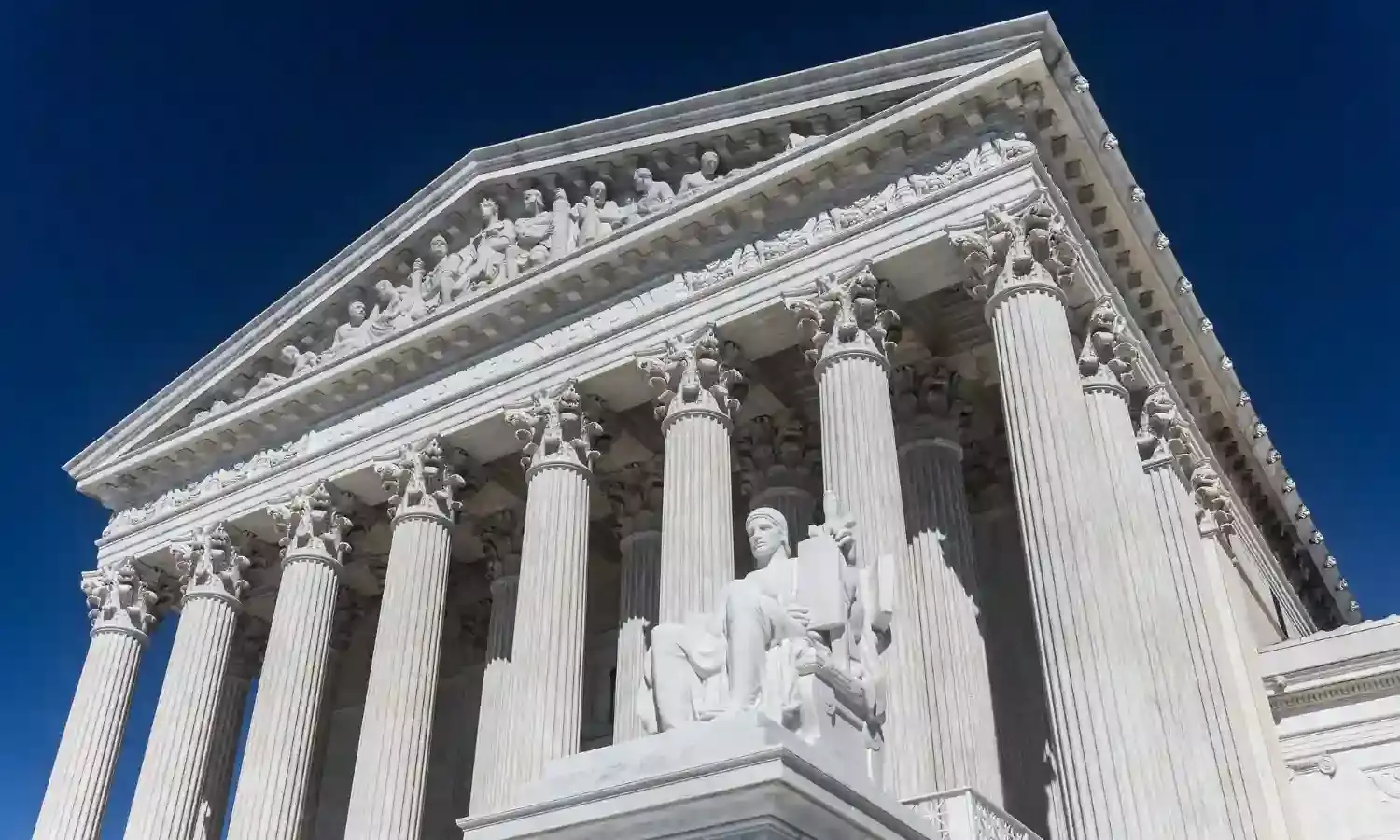Many Universities For Long Wrongly Concluded That Touchtone Of Individuals' Identity Is Color Of Their Skin: SCOTUS While Holding Race-Based Admissions Unconstitutional
Holding that the universities have failed miserably “to present an exceedingly persuasive justification for separating students on the basis of race that is measurable and concrete enough to permit judicial review, as the Equal Protection Clause requires”, the Supreme Court of the United States (SCOTUS) has held the race-based admissions in universities to be unconstitutional.
“Because Harvard’s and UNC’s admissions programs lack sufficiently focused and measurable objectives warranting the use of race, unavoidably employ race in a negative manner, involve racial stereotyping, and lack meaningful end points, those admissions programs cannot be reconciled with the guarantees of the Equal Protection Clause”, read the detailed judgment authored by Chief Justice John Glover Roberts.
However, the bench in the judgment even made it clear that still, nothing prohibits the universities from considering applications with the race in the background till the time it brings out the unique ability of the student in the foreground.
“At the same time, nothing prohibits universities from considering an applicant’s discussion of how race affected the applicant’s life, so long as that discussion is concretely tied to a quality of character or unique ability that the particular applicant can contribute to the university. Many universities have for too long wrongly concluded that the touchstone of an individual’s identity is not challenges bested, skills built, or lessons learned, but the color of their skin. This Nation’s constitutional history does not tolerate that choice”, the 237 page judgment further read.
The decision was in a 6:3 ratio against University of North Carolina (UNC) while 6:2 against Harvard University. Justice Thomas, and Justice Gorsuch filed a concurring opinion, Justice Sotomayor, Justice Jackson and Justice Kagan filed a dissenting opinion in University of North Carolina case while Justice Jackson recused from the Harvard University matter.
In the pertinent matter, the petitioner was Students for Fair Admissions (SFFA), a non-profit organization founded in 2014, whose purported purpose is “to defend human and civil rights secured by law, including the right of individuals to equal protection under the law.”
The petitioner approached the court questioning the highly selective admissions process in both Harvard and UNC to select students, which involved race at every crucial stage of the admission process.
SFFA filed separate lawsuits against Harvard and UNC, contending that their race-based admissions programs violate, respectively, Title VI of the Civil Rights Act of 1964 and the Equal Protection Clause of the Fourteenth Amendment.
After separate bench trials, both admissions programs were found permissible under the Equal Protection Clause and the Court’s precedents. In the Harvard case, the First Circuit affirmed, and the Court granted certiorari, however, in the UNC case, the Court granted certiorari before judgment.
The petitioner thus approached the Court on a writ of certiorari before judgment to the United States Court of Appeals for the fourth circuit.
Therefore, the US Supreme Court had to consider one big question in the frame, whether the admissions systems used by Harvard College and the University of North Carolina, two of the oldest institutions of higher learning in the United States, are lawful under the Equal Protection Clause of the Fourteenth Amendment.
The bench after quoting the step by step arduous process of admission in the Universities, noted the final stage of Harvard’s process which is called the “lop”, whereby the list of tentatively admitted students is winnowed further to arrive at the final class, which contains four heads, legacy status, recruited athlete status, financial aid eligibility, and race.
“The universities’ main response to these criticisms is “trust us.” They assert that universities are owed deference when using race to benefit some applicants but not others. While this Court has recognized a “tradition of giving a degree of deference to a university’s academic decisions,” it has made clear that deference must exist “within constitutionally prescribed limits.” Grutter, 539 U. S., at 328. Respondents have failed to present an exceedingly persuasive justification for separating students on the basis of race that is measurable and concrete enough to permit judicial review, as the Equal Protection Clause requires”, the judgment read.
The Court also noted that the criteria for the purpose that was meant to be achieved keeping diversity in hindsight was arbitrary as South Asians and East Asians both were treated broadly under “Asians”.
“Second, respondents’ admissions programs (UCA) fail to articulate a meaningful connection between the means they employ and the goals they pursue. To achieve the educational benefits of diversity, respondents measure the racial composition of their classes using racial categories that are plainly overbroad (expressing, for example, no concern whether South Asian or East Asian students are adequately represented as “Asian”); arbitrary or undefined (the use of the category “Hispanic”); or underinclusive (no category at all for Middle Eastern students). The unclear connection between the goals that respondents seek and the means they employ preclude courts from meaningfully scrutinizing respondents’ admissions programs”, the bench observed.
“…Respondents’ race-based admissions systems also fail to comply with the Equal Protection Clause’s twin commands that race may never be used as a “negative” and that it may not operate as a stereotype. The First Circuit found that Harvard’s consideration of race has resulted in fewer admissions of Asian-American students. Respondents’ assertion that race is never a negative factor in their admissions programs cannot withstand scrutiny. College admissions are zerosum, and a benefit provided to some applicants but not to others necessarily advantages the former at the expense of the latter”, the judgment further read.
The bench refused to accept the argument raised by UCA challenging the locus standi of the Student’s organization stating that it is not a “genuine” membership organization.
“…SFFA is indisputably a voluntary membership organization with identifiable members who support its mission and whom SFFA represents in good faith. SFFA is thus entitled to rely on the organizational standing doctrine as articulated in Hunt v. Washington State Apple Advertising Comm’n, 432 U. S. 333, it further read.
The Fourteenth Amendment provides that no State shall 'deny to any person . . . the equal protection of the laws'. The Court’s early interpretations read, “the Fourteenth Amendment guaranteed ‘that the law in the States shall be the same for the black as for the white; that all persons, whether colored or white, shall stand equal before the laws of the States”’.
Dissenting Opinion:
In the dissenting opinion, however, Justice Sotomayor highlighted the several facets and the age-old practices where blacks and whites were blatantly distinguished and were subject to heavy biases. While reprimanding the practice of slavery it was further underlined, how the colleges and universities established white supremacy is still a deep-seated legacy of racial subjugation.
“Ignoring race will not equalize a society that is racially unequal. What was true in the 1860s, and again in 1954, is true today: Equality requires acknowledgment of inequality...UNC is not alone. Harvard, like other Ivy League universities in our country, 'stood beside church and state as the third pillar of a civilization built on bondage'”, the opinion read.
“…The Court today stands in the way of respondents’ commendable undertaking and entrenches racial inequality in higher education. The majority opinion does so by turning a blind eye to these truths and overruling decades of precedent, ‘content for now to disguise’ its ruling as an application of ‘established law and move on’….It is a disturbing feature of today’s decision that the Court does not even attempt to make the extraordinary showing required by stare decisis. The Court simply moves the goalposts, upsetting settled expectations and throwing admissions programs nationwide into turmoil. In the end, however, it is clear why the Court is forced to change the rules of the game to reach its desired outcome: Under a faithful application of the Court’s settled legal framework, Harvard and UNC’s admissions programs are constitutional and comply with Title VI of the Civil Rights Act of 1964, 42 U. S. C. §2000d et seq”, the dissent further read.
Cause Title: Students For Fair Admissions, Inc., Petitioner v. President And Fellows Of Harvard College
Click here to read/download the Judgment












